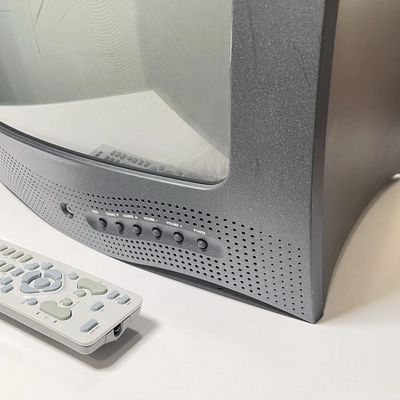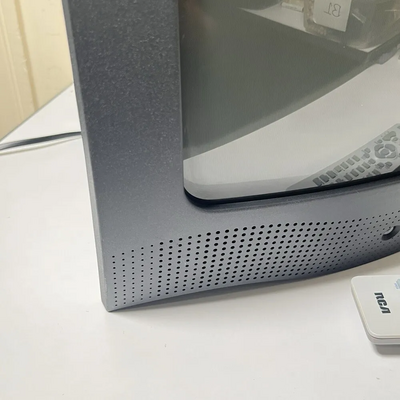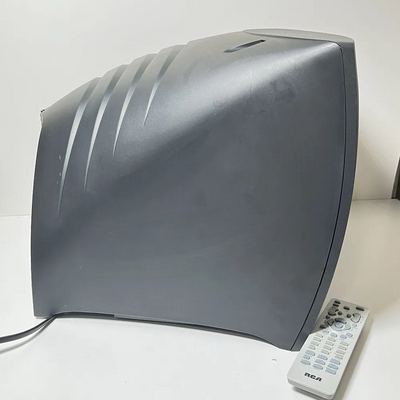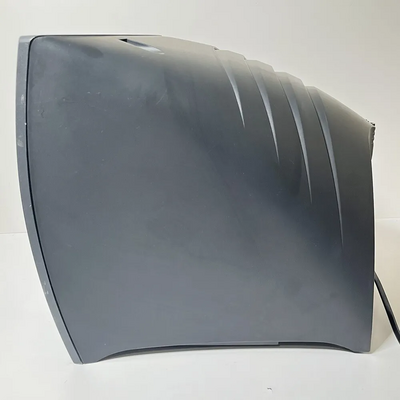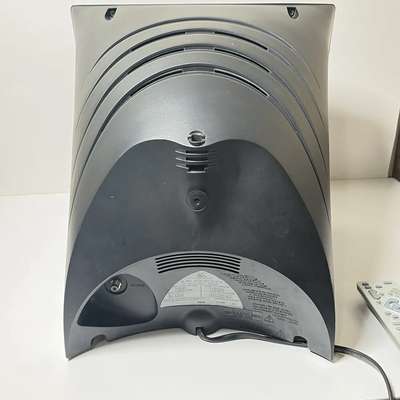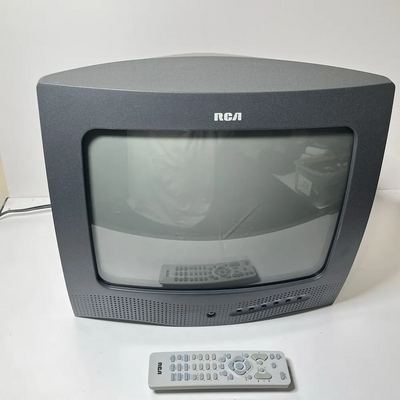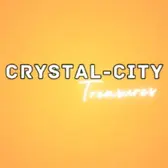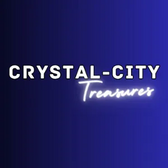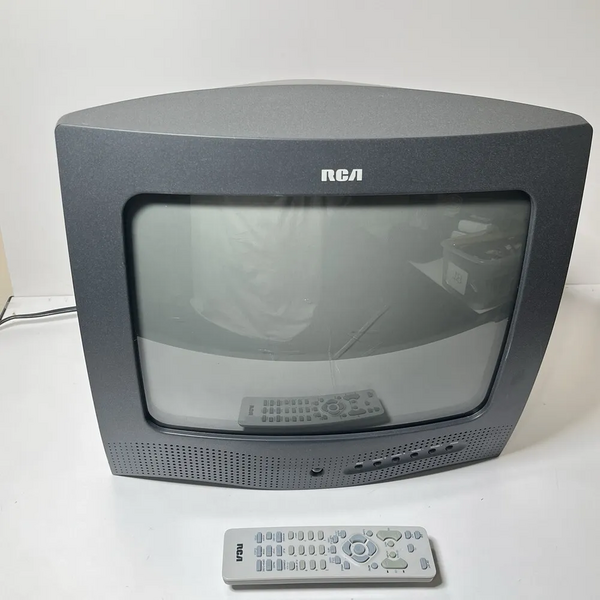
RCA E13308
| Brand | RCA 1980 |
| Model | E13320, E13308 |
| Released Year | 1980 |
| Type | TV |
| Screen Size | Approximately 13 inches diagonal |
| Resolution | Standard definition (approximately 480i) |
| Display Technology | CRT |
| Status | Discontinued |
Quick view
Overview
The RCA E13308 and E13320 are vintage CRT television models produced by RCA, popular during the late 1970s and early 1980s. These models feature a cathode-ray tube display with standard definition resolution, delivering analog video signals. They support composite video input and VHF/UHF analog tuners for broadcast reception. The chassis design emphasizes durability with discrete component circuitry and manual controls including mechanical channel selectors and rotary knobs for volume and tuning. Power consumption typically ranges between 80 to 120 watts depending on screen size and usage. These sets provide mono sound output through built-in speakers, utilizing analog audio amplification stages.
Connectivity options are limited to antenna inputs and basic audio/video inputs suitable for vintage devices. The cabinet is constructed with wood or plastic housing, reflecting design aesthetics of the era. These devices use analog scanning systems and require periodic alignment for optimal display quality. Repair and maintenance require specific knowledge of CRT technology and vintage electronic components.
Specifications
| Screen Size | Approximately 13 inches diagonal |
| Display Technology | CRT |
| Color | Black |
| MPN | E13320, E13308 |
| Audio/Video Inputs | Coaxial F, Composite Video RCA |
| Smart TV Features | Not Supported |
| Maximum Resolution | 576i |
| Model | E13308 |
| Features | Built-in Speakers, Sleep Timer |
| Country/Region of Manufacture | Thailand |
| Display Type | Cathode Ray Tube (CRT) |
| Resolution | Standard definition (approximately 480i) |
| Video Inputs | Composite Video, RF antenna input |
| Audio Output | Mono built-in speaker |
| Tuner | Analog VHF/UHF tuner |
| Controls | Mechanical channel selector, rotary knobs for volume and tuning |
| Power Consumption | 80-120 watts |
| Dimensions | Approximately 15 x 14 x 12 inches |
| Weight | Approx. 20-25 pounds |
| Cabinet Material | Wood or plastic housing |
| Connectivity | Antenna input, composite video input |
| Audio Amplifier | Analog mono amplifier |
| Color System | NTSC standard |
| Manufacture Period | Late 1970s to early 1980s |
Images
Key Advantages
The RCA E13308 and E13320 offer robust build quality suitable for long-term use. Their analog tuning systems allow reception of a wide range of broadcast frequencies without complexity. The CRT display technology provides rich color reproduction and deep contrast typical of vintage television sets. Mechanical controls enable straightforward operation without reliance on remote control technology. The units are compatible with vintage AV equipment, making them valuable for collectors and restoration enthusiasts. Additionally, repair and maintenance are feasible due to the use of discrete electronic components.
Limitations
These RCA models lack modern digital features such as HDMI or high-definition video support. Their screen size and resolution are limited compared to contemporary standards, resulting in lower picture clarity. The analog tuners do not support digital broadcast signals without an external converter box. Audio output is limited to mono sound, which impacts sound quality and immersion. Power efficiency is relatively low, and the CRT technology generates significant heat. Lastly, the bulky design and heavy weight make portability inconvenient.
FAQ
What type of display technology does the RCA E13308 use?
The RCA E13308 uses cathode-ray tube (CRT) technology for its display.
Are these models compatible with modern digital broadcasts?
No, these models only support analog VHF/UHF signals and require an external converter for digital broadcasts.
What video inputs are available on the RCA E13320?
The RCA E13320 typically features composite video inputs along with antenna connections.
Do these models have stereo sound?
No, they provide mono sound output through built-in speakers.
Can I connect a DVD player directly to these TVs?
Yes, if the DVD player has composite video output, it can be connected directly to the TV’s video input.
Are replacement parts still available for repair?
Some replacement parts may be found through vintage electronics suppliers or second-hand markets, but availability is limited.
What is the typical power consumption of these models?
Typical power consumption ranges from 80 to 120 watts depending on usage.
Disclaimer
The content on is provided for general informational purposes only. We do not guarantee the accuracy, completeness, or reliability of any information, specifications, or visuals presented on the site.
is not responsible for any content, images, or data uploaded or shared by users. Users are solely responsible for the content they submit.
We may include links to third-party websites for convenience. We do not endorse or take responsibility for the content or policies of any external sites.
Use of the site is at your own risk. Always verify critical information independently before making decisions based on content from this website.

